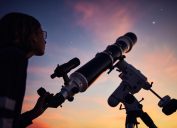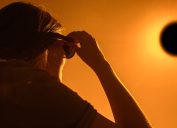The "Da Vinci Glow" Will Light Up the Moon This Week—Here's How to See It
Even though it's far from full, our closest neighbor will appear brighter in the sky.

Of all the objects in the night sky, the moon is usually the easiest thing to spot. Our orbiting satellite can brighten dark nights with its soft glow and become a real center of attention during less common events like lunar eclipses. And while it's beautiful to gaze at on any given night, a unique phenomenon known as the "Da Vinci glow" will light up the moon this week in a dazzling spectacle. Read on to see how you can catch a glimpse of the special event for yourself.
READ THIS NEXT: NASA Says Solar Eruptions Are Increasing—Here's How That Could Affect Us.
The moon will appear brighter in the sky this week thanks to the "Da Vinci glow."
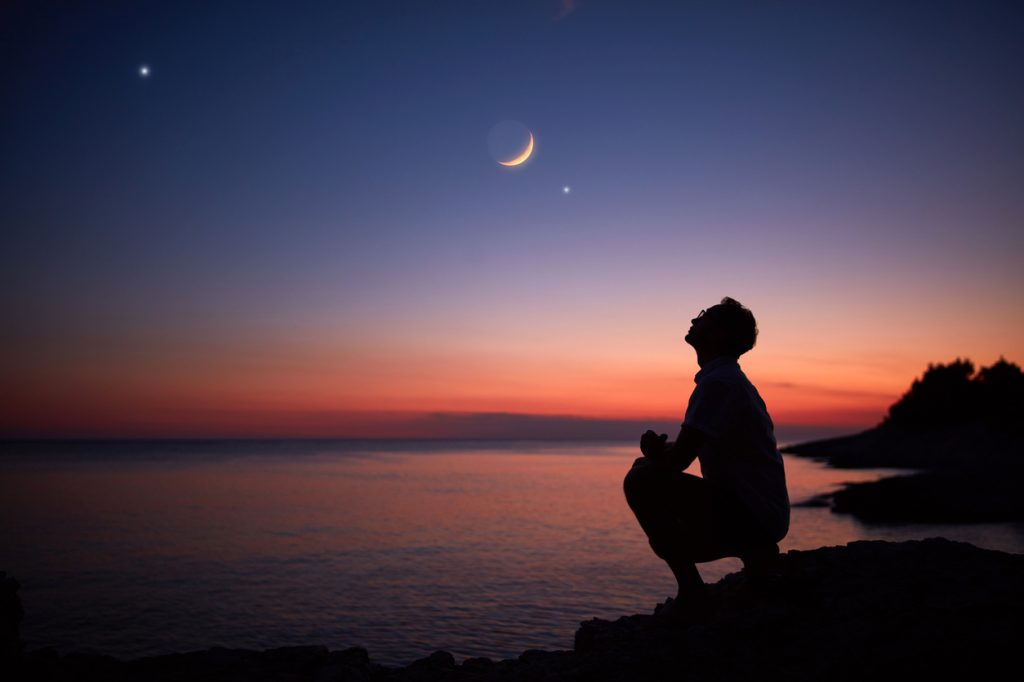
The moon's monthly cycle from new to full changes its brightness in the sky as it goes from a sliver of light to a glowing orb and back again. But beginning this week, our orbiting satellite will appear a little brighter in its minimal crescent phases thanks to a phenomenon known as the "Da Vinci glow," CBS News reports.
Even though it's only barely illuminated, the term refers to a unique window where the moon becomes fully visible as a faint orb in the sky, according to NASA. Coincidentally, the effect is essentially similar to the conditions that create moonlight. However, in this case, the glow is created by light reflected onto the moon by our planet known as "Earthshine," which can be 50 times brighter than what a full moon creates on Earth.
Da Vinci was one of the first to theorize about what caused the phenomenon in his writings.

As the name suggests, the term comes from the writings of the famed Italian inventor Leonardo Da Vinci. The 16th-century scientist was one of the first to theorize about the cause of the ghostly phenomenon, stating that he believed the moon had an atmosphere and oceans that reflected light bouncing off of Earth's oceans back in our direction, according to NASA.
While lunar explorations proved Da Vinci wrong in his theory that the moon is covered with water, he was correct that light coming from Earth was responsible for its appearance in the sky during its crescent phases. Research from NASA has also clarified that most of the light hitting the moon is also reflected by our planet's clouds and not by the oceans, which actually appear relatively dark from the lunar surface.
RELATED: For more up-to-date information, sign up for our daily newsletter.
You can only spot the moon's "Da Vinci glow" at certain times of the night.
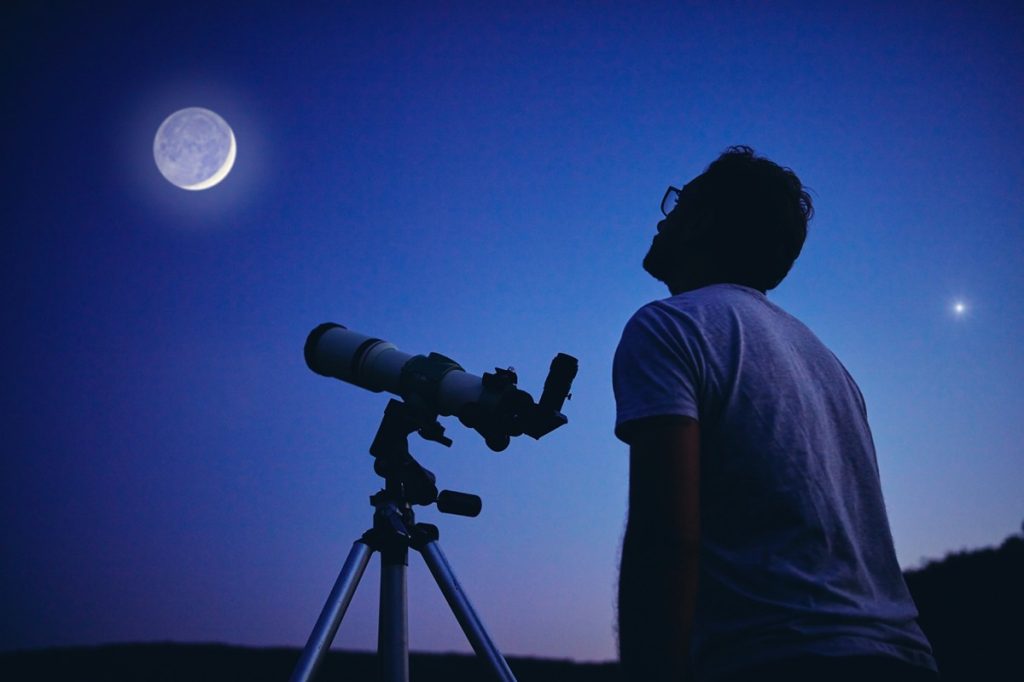
Fortunately, those hoping to catch a glimpse of the "Da Vinci glow" will have plenty of opportunities to get outside and look for it. Since the moon is approaching its new phase on May 19, observers can wake up early on the morning of May 18 to see the spectacle an hour before sunrise, according to Live Science.
The moon will then disappear from view on Friday before it restarts its cycle in the following days. However, this reverses the visible hours, appearing in the western portion of the sky for an hour after sunset on May 21 through May 23.
You won't need any special equipment to view the spectacle—but it is becoming more challenging to see.
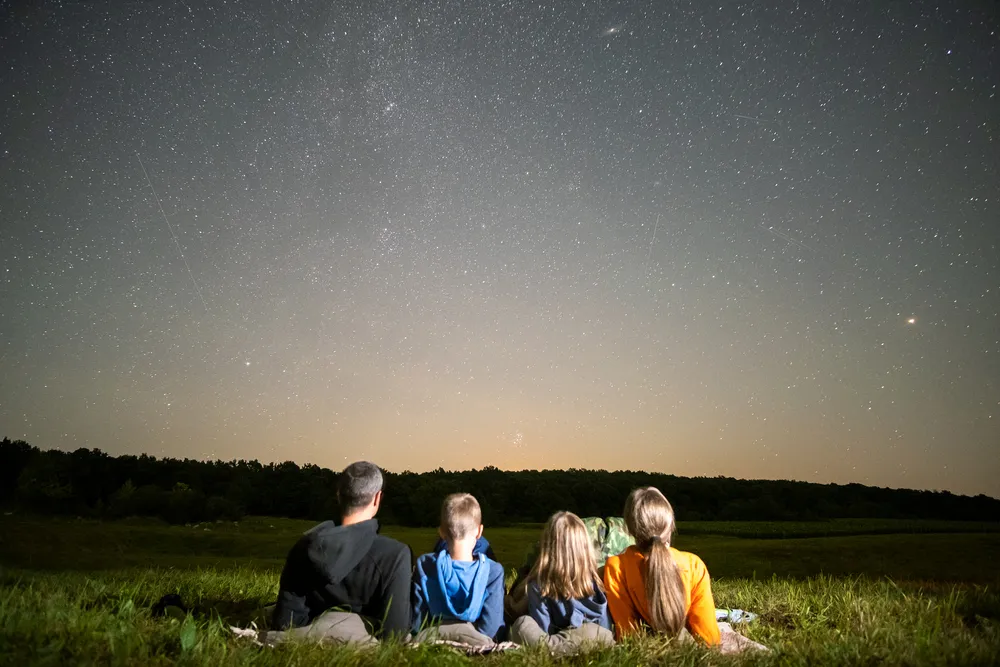
As with most moon-viewing events, you won't need a pair of binoculars or a telescope to get a good look at the lunar phenomenon this week. In fact, it's arguably best viewed with the naked eye, according to Live Science.
But while you have plenty of time to catch views of the "Da Vinci glow" over the coming nights, it might not look the same for long. Climate change has caused the warming of our planet's oceans, increasing the temperature of the Pacific and in turn reducing the number of clouds generated above it, according to scientists at Big Bear Solar Observatory. Unfortunately, this means the phenomenon could continue to dim in the coming years.
